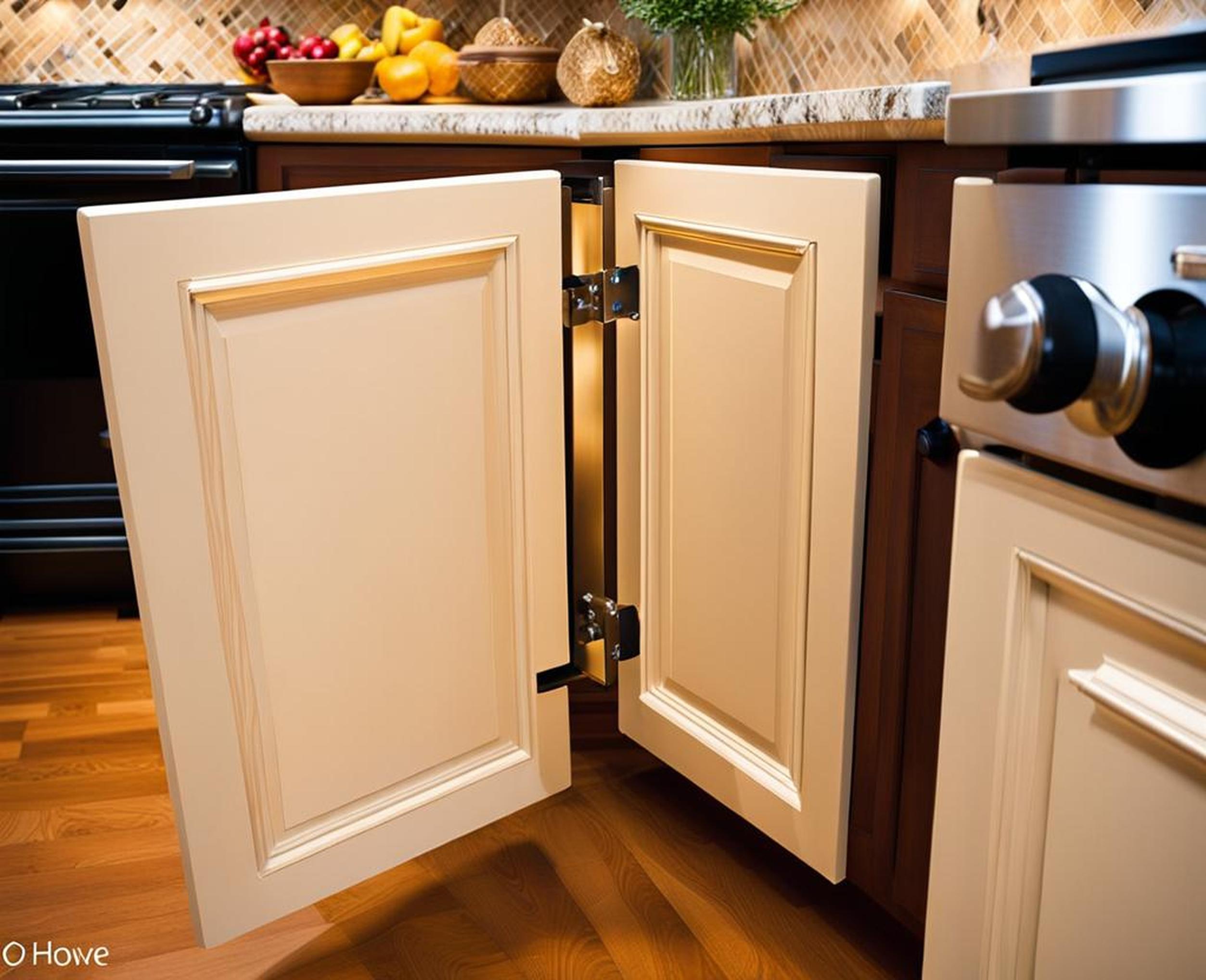Kitchen cabinets play a vital role in any kitchen design. They provide essential storage space while also contributing to the overall aesthetic. One of the most important but often overlooked components of kitchen cabinets are the hinges. While hinges may seem like a minor detail, they have a significant impact on the functionality and appearance of your cabinets.
When selecting kitchen cabinet hinges, you have several options to consider that will determine the ease of use, visibility, and style of your cabinet doors.
Types of Kitchen Cabinet Hinges
There are five main categories of kitchen cabinet hinges, each with their own advantages and ideal uses:
Self-Closing Hinges
Self-closing hinges, also called spring hinges, use internal springs and hydraulic mechanisms to pull cabinet doors closed after they’ve been opened. This self-closing action helps keep cabinets neatly closed when not in use.
Benefits:

- Keeps doors securely closed, preventing accidents or damage
- Convenient for frequently accessed cabinets like below sinks
- Prevents doors from drifting open over time
Potential drawbacks include increased cost and the risk of slamming.Self-closing hinges are ideal for base cabinets and other high-traffic areas.
Concealed Hinges
Concealed cabinet hinges have housings that mount inside cabinet doors and frames, leaving no visible hardware on the exterior surface. The result is a smooth, seamless look.
Benefits:
- Create a clean, integrated appearance
- Allow for full overlay doors without gaps
- Don’t detract from door and cabinet styling
However, concealed hinges require expert installation and don’t permit door removal without adjustments. They’re an excellent choice for contemporary, minimalist kitchens.
Partial Overlay Hinges
Partial overlay hinges mount to the inside surface of doors and cover only part of the cabinet frame’s face when closed. Typically half of the frame is still visible.
Benefits:
- Prevent doors from colliding into one another
- Allow some cabinet face to remain visible
- Usually easy to install as a DIY project
On the downside, partial overlay hinges leave visible gaps between doors and frames. They’re ideal for traditional and transitional kitchen styles.
Full Overlay Hinges
Full overlay hinges enable cabinet doors to completely cover the face frame when closed for a seamless, integrated look.
Benefits:
- Create a smooth, gap-free surface
- Conceal the entire cabinet frame
- Allow unobstructed access within the cabinet box
The main caveat is that full overlay hinges require precision installation to properly align doors. They excel in contemporary and modern kitchens.
Butt Hinges
Butt hinges are made of two rectangular leaves joined by a pin. They attach to the inner edge surface of doors and the cabinet frame.
Benefits:
- Simple, inexpensive, and easy to install
- Widely available at hardware stores
- Allow doors to open wide
However, butt hinges leave an obvious gap between doors and frames. They work well for casual, country-style kitchens.
Factors to Consider When Selecting Hinges
With an understanding of the main kitchen cabinet hinge categories, consider the following factors to choose the best option for your specific kitchen:
Cabinet Door Style and Size
The overlay or reveal of your cabinet doors will dictate compatible hinge types. heav
Additionally, weighty or oversized doors require beefier hinges to support them without sagging or misalignment. Know your door specifications.
Ease of Installation
Some hinges like exposed butt hinges can easily be installed by DIYers. Other types like concealed hinges require careful measurements and professional expertise to install properly.
Visibility of Hinges
If an integrated, invisible hinge look is important for your design, concealed hinges are the way to go. For more traditional kitchens, exposed hinges with decorative finishes can enhance styling.
Noise Reduction
Options like self-closing and soft-close hinges eliminate slamming and banging noises. Their dampening mechanisms gently catch the door when closing. Great for households with kids!
Budget
While specialty hinges can run $10-20 per pair, simple butt hinges often cost just a few dollars. Determine how much you want to invest to achieve your ideal functionality and style.
While often overlooked, cabinet hinges play a surprisingly important role in kitchen design. Take the time to consider which hinge types best suit your cabinet style, kitchen functionality, and budget. With a bit of planning and smart hinge selection, you can install cabinet doors that operate smoothly and look beautiful.
